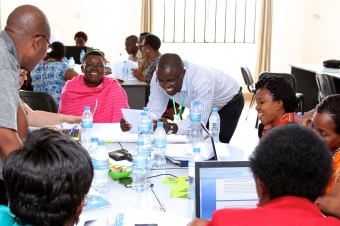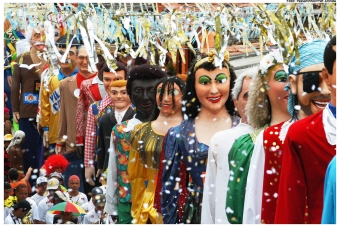Summary:
The activity focuses on the antinomy between the ethical dictates of the magistracy and the constitutional and legal rules that govern the judicial process. To do so, students are encouraged to solve a concrete situation in which they find themselves in conflict with the rules that secure the natural judge and religious orientation of the judge in the case. In the end, it is intended that students know how to identify situations of antinomies among standards and are able to deal constructively and creatively with these conflicts, in order to overcome them safely and consistently.
Objective:
- The class had as a target audience, judges in initial training or continuing education. The goal was to show to the students how in practice the ethical dictates of the magistracy can rub with the constitutional and legal rules that govern the judicial process.
- It is intended to develop in the students:
a) the ability to identify antinomies, apparent or real, between ethical and constitutional or legal rules.
b) the ability to deal constructively and creatively with such antinomies, in order to overcome them safely and consciously.
Dynamics:
- TEACHING METHOD: debates and problem-based learning, through the solution of a difficult case.
- REQUIREMENTS: there is no previous reading for students. The professor was previously prepared with the study of the Magistracy Statute, the “Princípios de Bangalore” of Law n. 7.716/89 and the possible CNJ decisions about judicial exemption. It is recommended the reading of the judgment of Adolf Eichmann in Jerusalem – for example, the book of ARENDT, Hannah. Eichmann em Jerusalém: um relato sobre a banalidade do mal. São Paulo: Companhia das Letras, 1999.
- INTRODUCTION TO THE DYNAMICS: the class began with a brief presentation by the professor about the problem-situation (attached) - Estimated time of 20 min. - DEVELOPMENT OF THE DYNAMICS: the professor asked the class to be divided into groups of up to five people to discuss which of the presented positions would be the most appropriate. At the same time, he informed to the group that in the end of the discussion time (30 minutes), each group would have five minutes to present their findings and may choose to appoint a person to do it or accomplish it as a group. Thus, knowing that there were four groups of five students, the exposure of all groups took 20 minutes. After internal discussions, the professor asked to the students to divest the group and to return to their individual seats. After that, he offered to the students two issues:
a) if the dissemination of anti-Christianity was a crime, Christians judges - more than 90% of the population – Did all these judges to give as suspects?
b) returning to the Jew judge situation, imagine that the judge (student) has read the case and came to the conclusion that the defendant deserved a lenient sentence. This is a newly divorced who lost his job. Perhaps, it is more of a case of who is going through a difficult time of life and venting his anger than a racist genuine. However, knowing your co-judicial session for a long time, you know that hardly any of them would give the case the same "benevolent" look that you would give to the process. Anyway, the fact of knowing that the defendant probably would fare better if it was you who judge the case, so would you be influenced in your choice among the three positions above?
After the discussion of the issues - or provocations - the professor gathered the students’ individual opinions on such provocations. The entire recovery process took about 20 minutes.
- END OF THE DYNAMICS: The professor exposed students to some similar situations of real or apparent friction ethical principles with constitutional or legal rules that are constant throughout the judicial career. Finally, each judge must develop the skills to identify and deal, in the best way, with the friction and there is no existing the right or wrong answer exactly to most of these problems.
Evaluation:
- GRADE EVALUATION: the evaluation criteria did not occur by choosing of the "right" answer, but (i) for the participation in the debate, on the exhibit and provocations phase and (ii) by the ability to go deep into the question, seeing it from different angles.
Observation:
Copyright from the cover page image (cropped):
Image: "Jews pray in the Wailing Wall", 2010, available by the Flicker user "Zachi Evenor", under the Creative Commons BY 2.0 license.






